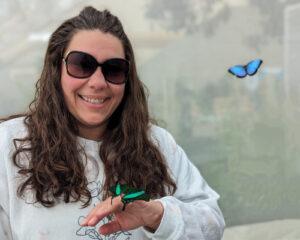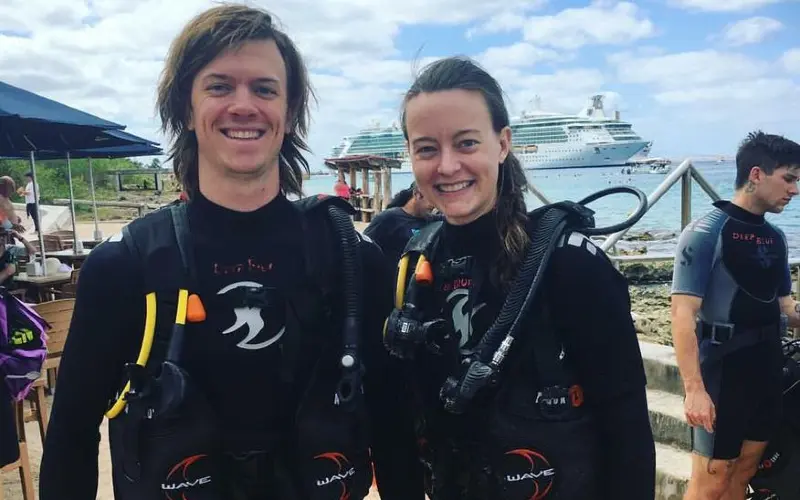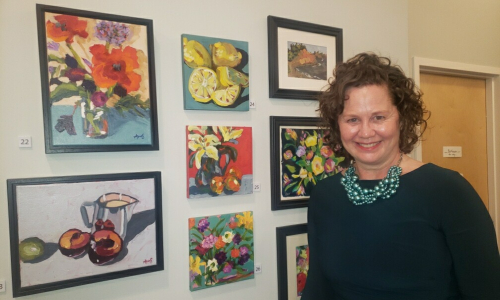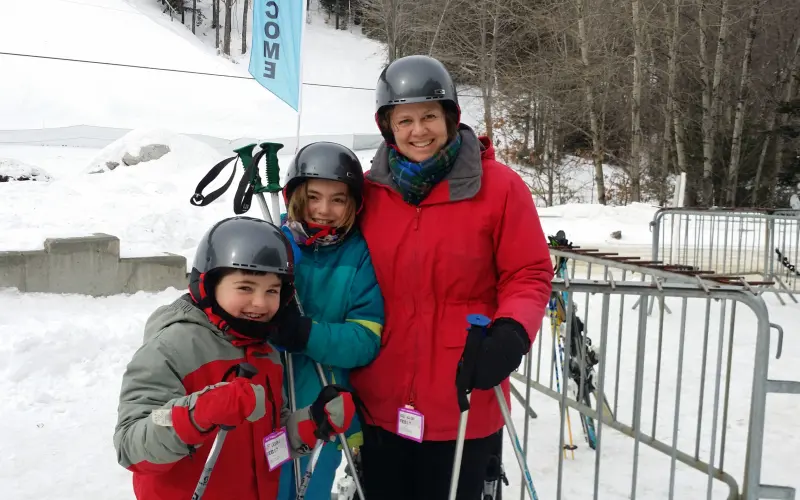Warning: This story contains mentions of suicide that may be triggering to some readers.
A Life Turned Upside Down
At the peak of what was supposed to be the most exciting and happy years of my carefree, teenage life, I experienced an injury that would turn my world upside down.
On July 4, 2023, at the age of 16, my family and I were celebrating the holiday just as we always had, lighting fireworks in our backyard. One unexpectedly malfunctioned and exploded directly in my face. I could not see nor hear after the blast. For a moment, I thought I might have died.
We went directly to the local emergency room, hoping it wasn’t serious. I had no obvious physical injuries, so the physician sent me home, simply writing it off as a panic attack. For the next few weeks, I experienced debilitating headaches, dizziness, and had problems hearing. I visited my doctor several times only to be told I had severe migraines, and got prescribed medications that didn’t alleviate my suffering.

Believing I was okay, I went to an amusement park that summer with a friend and rode every roller coaster in sight. After exiting one of the indoor coasters, I fell off and thought maybe it was motion sickness. Getting off the next ride, I was nauseous, my vision was blurred, and my head was pounding. The drive back home was unbearable, and I had to sleep the entire time.
Since that day, I’ve continued to have horrible headaches, delayed cognitive function and motor skills, foggy memory, light and sound sensitivity, slurred speech, and severe neck pain. My face looks swollen, and my eyes seem off, as if I’m unable to focus.
I carried on with school, barely getting through the day while making multiple trips to the nurse’s office. They didn’t believe a word I said, telling me I was faking it to get out of class. In fact, other than my family, no one believed my problems. It wasn’t until during my final exam to get a modeling contract when a fellow candidate asked if I was alright; I’d taken medicine and looked somewhat pale. I told her about my accident, and she responded saying she’d had post-concussion syndrome (PCS) for five years before going to a concussion clinic, which helped immensely in her recovery.

I excitedly told my mother about this, and we went to the emergency room at a bigger hospital the next day. A physician diagnosed me with PCS, before referring me to a concussion clinic. It’s not an exaggeration to say the first appointment there changed my life. From the second I sat down in the chair, the therapist described in detail how I must’ve been feeling. For the first time, someone knew what I was going through. For the first time, someone believed me.
Unfortunately, the rest of the school year was awful. I was bullied for my condition not only by classmates but by a few teachers and staff as well. No one could understand my condition was real. They would gossip about me “faking it” and calling me “an amazing actress” while I was around. I was questioned multiple times about my attendance, despite having written accommodation in a 504 plan. I was also banned from the library; the only quiet place I could complete classwork or have lunch in peace. Instead, I was accused of skipping class.
Even worse, my mother was also harassed at work about my situation. These experiences made pushed me into a cycle of depression, self-harm, and suicidal thoughts which I still struggle with today. I had to start taking classes online at Union High School. I now realize how much PCS can affect your life, stripping it of what it once was. You’re sometimes like a shell of a person. You can feel totally helpless, angry, and alone.
Support through Recovery
Thankfully, I‘ve been fortunate to have a wonderful support system around me to help through the difficult times. They’ve been there for me through this rough process and I’m forever grateful to them all:
- My mother and boyfriend Andrew have sacrificed so much to take care of me. They lift me up when I’m down, hold me while I cry, and make sure I know I’m loved.
- My sister Alexa checks in on me daily and reminds me I always have a best friend who’ll be in my corner through thick and thin.
- My Aunt Tonya and Uncle Rex provide constant sympathy and inspiration. Uncle Rex even helps with math, the hardest subject for me as I’ve dealt with PCS.
- My best friend Lexi is always making sure I laugh, reminding me how brave I am, and sticking up for me when I’m not around.
- And of course, Union High School treated me as one of their own from the first day. Not only was I respected and cared for, the teachers helped me excel when I didn’t think I could, ensuring I would finish my senior year with all A’s. I am so proud to call myself a Union Rocket.
What I’ve learned about recovery is it’s not linear and often extremely frustrating. It’s so important to adjust daily living to accommodate your needs, no matter how that may look. I like to carry around a “PCS care kit” when I’m out in public. I call it my best friend and savior. The kit includes Tylenol, aspirin, motion sickness bands, earplugs, sunglasses, and blue light glasses. It may look silly, but wearing the sunglasses always comes in handy when inside bright stores.

I’ve also learned to be patient and have grace for myself. Living with PCS can be a long and emotional battle. Listen to your body and give yourself the healing time you need.
Every day is a reminder I survived my accident. It’s great perspective to keep in mind when life gets tough, that I’m still here and going strong. Daily mantras, meditation, and being in nature have helped maintain a positive feeling that I’m safe and will get through this. I’ve also been attending weekly sessions with a therapist who is dealing with PCS. I highly recommend therapy to navigate the spiral of emotions you’ll inevitably encounter.
During the worst of my PCS, I always wished I had someone to talk to who had gone through the same experience. It’s incredibly reassuring to know others have been in your shoes and understand the struggle. I’ve decided to write about my personal journey in a memoir, to help show everyone out there battling PCS you’re not alone and it will get better. Despite what people say or tell you, remember this: you are strong, smart, and brave.
Don’t let that go.
______________________________
Suicide is preventable and help is available. If you are concerned that someone in your life may be suicidal, the five #BeThe1To steps are simple actions anyone can take to help someone in crisis. If you are struggling to cope and would like some emotional support, call the 988 Suicide & Crisis Lifeline at 988 to connect with a trained counselor. It’s free, confidential, and available to everyone in the United States. You do not have to be suicidal to call.
Are you or someone you know struggling with lingering concussion symptoms? We support patients and families through the CLF HelpLine, providing personalized help to those struggling with the outcomes of brain injury. Submit your request today and a dedicated member of the Concussion Legacy Foundation team will be happy to assist you.













































